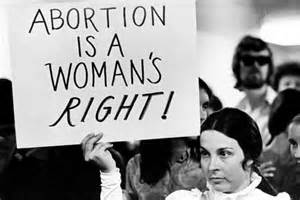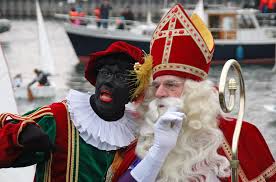 ‘Feminist: the person who believes in the social, political and economic equality of the sexes’ is a famously quoted sentence from Beyoncé’s song ‘Flawless’. Recently women, and especially the adolescent ones, are becoming more aware of the inequality that occurs in their everyday lives. Not only has this led to empowering messages, organisations and protests, but it has also created a big anti-feminist movement. In order to truly understand the definition of feminism and its beliefs, we have to go back to events happening in the nineteenth century; the feminist waves.
‘Feminist: the person who believes in the social, political and economic equality of the sexes’ is a famously quoted sentence from Beyoncé’s song ‘Flawless’. Recently women, and especially the adolescent ones, are becoming more aware of the inequality that occurs in their everyday lives. Not only has this led to empowering messages, organisations and protests, but it has also created a big anti-feminist movement. In order to truly understand the definition of feminism and its beliefs, we have to go back to events happening in the nineteenth century; the feminist waves.
Throughout all of history there have been three main periods in which the feminists protested. The first of them occurred on the 19th of July 1848 during a woman’s right
convention in Seneca Falls, New York. The two organisers, Elizabeth Stanton and Lucretia Mott, met during the World Anti-Slave ry Convention in 1940. During the Convention they had to sit separate from the men and they were basically excluded from the event. This led to them discussing the possibility of a women’s rights convention. When they met up, eight years later in Seneca Falls, they decided it was time to host ‘a convention to discuss the social, civil, and religious condition and rights of woman’. Stanton wrote a document, The Declaration of Sentiments, containing 18 injustices about the unequal rights and 11 resolutions that would make equal rights possible. This document was to be signed by everyone that attended the Seneca Falls Convention. During this event the attendees discussed every part of the document, and eventually the majority signed it. Once the Convention had ended a lot of newspapers, first just local papers, but then the story got picked up by the bigger ones, published stories on the subject. Some of the reports were positive, but a lot of them were not. Although nothing changed regarding the unequal rights, the Convention had started a movement. The Declaration of Sentiments became the basis of the women’s rights movement and since the event had gotten international news coverage, a large amount of people was aware of the progression made in order to gain equal rights.
ry Convention in 1940. During the Convention they had to sit separate from the men and they were basically excluded from the event. This led to them discussing the possibility of a women’s rights convention. When they met up, eight years later in Seneca Falls, they decided it was time to host ‘a convention to discuss the social, civil, and religious condition and rights of woman’. Stanton wrote a document, The Declaration of Sentiments, containing 18 injustices about the unequal rights and 11 resolutions that would make equal rights possible. This document was to be signed by everyone that attended the Seneca Falls Convention. During this event the attendees discussed every part of the document, and eventually the majority signed it. Once the Convention had ended a lot of newspapers, first just local papers, but then the story got picked up by the bigger ones, published stories on the subject. Some of the reports were positive, but a lot of them were not. Although nothing changed regarding the unequal rights, the Convention had started a movement. The Declaration of Sentiments became the basis of the women’s rights movement and since the event had gotten international news coverage, a large amount of people was aware of the progression made in order to gain equal rights.
The second feminist wave started in the 1960’s in the USA, but eventually spread out and became a worldwide movement. The two decades before this era made
the movement possible. In the 1940’s a lot of men went away to fight in World War II, which resulted in women taking over the jobs they left behind. When the War finished and the men were reinstated at their old positions, women were left with nothing and decided that they wanted to keep working these jobs. In the late 1950’s, people started to become more curious. New music, new art, new literature, new fashion were created and new ideas were thought of. This included the introduction and approval of the contraceptive pill, or ‘the pill’, which made sure that women could no longer unexpectedly become pregnant. Another idea that gained more acceptance was that women wanted to do  the same labour as men, and get paid the same amount. A popular belief, at that time, was that the only thing they could do was take care of the children and do the chores. However, throughout the wave more and more women realised the importance of having their own live and career. This inequality was fought via anti-discrimination laws. A great example of this was an amendment to the Civil Rights Act. Howard Smith, a representative from Virginia, wanted to add a prohibition on gender discrimination. Although all the other male representatives laughed at his proposal, the amendment eventually did pass.
the same labour as men, and get paid the same amount. A popular belief, at that time, was that the only thing they could do was take care of the children and do the chores. However, throughout the wave more and more women realised the importance of having their own live and career. This inequality was fought via anti-discrimination laws. A great example of this was an amendment to the Civil Rights Act. Howard Smith, a representative from Virginia, wanted to add a prohibition on gender discrimination. Although all the other male representatives laughed at his proposal, the amendment eventually did pass.
Another issue the feminists had with the law was that abortion was not legalised. Therefore women could not decide whether or not they actually wanted to keep the baby. Since anti-conception for women was something recent, and was not widely accepted, they did not have another option then keeping it. They addressed the issue by protests, publicly admitting to illegal 
abortion and explaining their reasons why. In 1973 abortion was finally legalised throughout the entire US, however every state can add their own conditions, which still makes it difficult, in certain states, to get an actual abortion. In the end the second wave made a big difference on the subject of equal rights in the workplace and on the subject of women’s rights of their own body.
The third wave of feminism began in the early 1990’s and is still continuing until this day. These feminists were/are the daughters of the women that fought for their own rights in the second wave. Their mothers had successfully fought for equal job opportunities, but there still wasn’t any actual equality. There were a lot of barriers on the job market, not only for women, but for everyone that was not a white, straight man. These women were/are ambitions and were/are willing to fight these obstacles. In this period of time feminism grew and extended, it no longer was about just the female gender. Subjects such as sexuality, race, femininity, masculinity were also of great importance. Another thing feminists tried to fight were the stereotypes displayed in movies and other art forms. These stereotypes were often showing unrealistic expectations of women, and they influenced expectations in real life. By trying to change the display of their gender in movies, feminists tried to change their position in reality. One of the most memorable moments at the beginning of the movement was the letter that Rebecca Walker wrote for MS Magazine. In this article she wrote about her rage about women being silenced by white men due t
o oppression. Throughout the years many other events occurred that showed that the feminists were fighting for something that was justifiable. One of the most recent events, and hence the large st combined demonstration in the history of the United States, was the ‘Women’s March on Washington’. Between 3.3 and 4.6 million people joined marches all around the world to protest for immigration, health care, civil & LBTQ rights and environmental issues. This event took place one day after President Trump’s inauguration, since his opinions on most of these matters are the opposite of the feminist ones.
st combined demonstration in the history of the United States, was the ‘Women’s March on Washington’. Between 3.3 and 4.6 million people joined marches all around the world to protest for immigration, health care, civil & LBTQ rights and environmental issues. This event took place one day after President Trump’s inauguration, since his opinions on most of these matters are the opposite of the feminist ones.
Like President Trump, there are a lot of people that disagree with the ideas that the feminists have. These people, the so-called anti-feminists, believe that feminists are over exaggerating and that they want to oppress men. This is sometimes caused by the misunderstanding of the definition of the word ‘feminist’. It is commonly believed that feminists want the female gender to stand above the male one, and that is why people believe that feminists are ‘bad’. Out there on the internet are millions of websites stating why feminism is bad and that things that feminists claim is ‘bullshit’. In some occasions, the writers do have a point, there are indeed extreme feminists and they tend to exaggerate. Not every single thing has to do with discrimination or sexism, and extreme feminists sometimes do believe that. However, the solely basis of feminism is still just wanting social, economic and political equality, and that is what people need to know.
In conclusion, feminism is a movement that has been active for over two decades. In this period of time the feminists have booked a lot of progress in order to gain a balance between the two genders. Without them fighting for their rights all those years ago, my life, and the life of many other girls and women around the world would be completely different. Therefore, I support this movement and its beliefs. However, I do agree that there is limit to all of this, and that we should not make a discussion out of every small event happening in the world. I look forward to seeing what the Third Wave is going to bring us in the future.
Sophie Pijl









 If you are looking for a country where you can adapt, this country is Brazil. You can find what you want, for example, someone from your country, because in Brazil there a lot of cultures mixed. You can find the type of food that you want to eat, but you need to eat the Brazilian food, is the best cooking in the world.
If you are looking for a country where you can adapt, this country is Brazil. You can find what you want, for example, someone from your country, because in Brazil there a lot of cultures mixed. You can find the type of food that you want to eat, but you need to eat the Brazilian food, is the best cooking in the world.










 First, he stabbed three men to death in his apartment. He was in possession of two knives, a Glock 34 handgun, and two SIG Sauer P226 handguns. In the hours before the massacre, he posted on YouTube a video titled Retribution confession. Seated behind the wheel of his car, he filmed and explained, for nearly seven minutes, his hatred to the world.
First, he stabbed three men to death in his apartment. He was in possession of two knives, a Glock 34 handgun, and two SIG Sauer P226 handguns. In the hours before the massacre, he posted on YouTube a video titled Retribution confession. Seated behind the wheel of his car, he filmed and explained, for nearly seven minutes, his hatred to the world.










 So, Holland is basically North-Holland and South-Holland combined. Holland was famous during the Dutch golden age, the 17th century, because of their many ships who tried to establish the trading routes. The Netherlands didn’t exist back then, so the sailors referred to their city state, South-Holland and North-Holland. So, Holland refer to the Netherlands as a synonym, but this is not true.
So, Holland is basically North-Holland and South-Holland combined. Holland was famous during the Dutch golden age, the 17th century, because of their many ships who tried to establish the trading routes. The Netherlands didn’t exist back then, so the sailors referred to their city state, South-Holland and North-Holland. So, Holland refer to the Netherlands as a synonym, but this is not true.  helpers called Zwarte Piet. People aren’t sure where Zwarte Piet originally came from but there is a suggestion. People say that Sinterklaas helped them from escaping slavery, and as an reward they kept helping Sinterklaas. Nowadays, Sinterklaas gives children presents on December 5th. Every year, he arrives in a big boat with his helpers in Holland. Mostly on November 11th. Children put their shoe under the fire place, and every once a week Zwarte Piet comes through the chimn
helpers called Zwarte Piet. People aren’t sure where Zwarte Piet originally came from but there is a suggestion. People say that Sinterklaas helped them from escaping slavery, and as an reward they kept helping Sinterklaas. Nowadays, Sinterklaas gives children presents on December 5th. Every year, he arrives in a big boat with his helpers in Holland. Mostly on November 11th. Children put their shoe under the fire place, and every once a week Zwarte Piet comes through the chimn ey to deliver a present in the shoe of the kid. Some people suggest that this is why Zwarte Piet is black. During Sinterklaas we eat pepernoten. Pepernoten stand for the money that Sinterklaas gave to the poor. They are small cookies made with dutch cookie species and a lot of sugar.
ey to deliver a present in the shoe of the kid. Some people suggest that this is why Zwarte Piet is black. During Sinterklaas we eat pepernoten. Pepernoten stand for the money that Sinterklaas gave to the poor. They are small cookies made with dutch cookie species and a lot of sugar.
 dangling from a string in their mouths. In the afternoon, there are big parties in every city and there are a lot of festival with famous DJ’s such as Martin Garrix and Armin van Buuren.
dangling from a string in their mouths. In the afternoon, there are big parties in every city and there are a lot of festival with famous DJ’s such as Martin Garrix and Armin van Buuren. 




 ‘Feminist: the person who believes in the social, political and economic equality of the sexes’ is a famously quoted sentence from Beyoncé’s song ‘Flawless’. Recently women, and especially the adolescent ones, are becoming more aware of the inequality that occurs in their everyday lives. Not only has this led to empowering messages, organisations and protests, but it has also created a big anti-feminist movement. In order to truly understand the definition of feminism and its beliefs, we have to go back to events happening in the nineteenth century; the feminist waves.
‘Feminist: the person who believes in the social, political and economic equality of the sexes’ is a famously quoted sentence from Beyoncé’s song ‘Flawless’. Recently women, and especially the adolescent ones, are becoming more aware of the inequality that occurs in their everyday lives. Not only has this led to empowering messages, organisations and protests, but it has also created a big anti-feminist movement. In order to truly understand the definition of feminism and its beliefs, we have to go back to events happening in the nineteenth century; the feminist waves. ry Convention in 1940. During the Convention they had to sit separate from the men and they were basically excluded from the event. This led to them discussing the possibility of a women’s rights convention. When they met up, eight years later in Seneca Falls, they decided it was time to host ‘a convention to discuss the social, civil, and religious condition and rights of woman’. Stanton wrote a document, The Declaration of Sentiments, containing 18 injustices about the unequal rights and 11 resolutions that would make equal rights possible. This document was to be signed by everyone that attended the Seneca Falls Convention. During this event the attendees discussed every part of the document, and eventually the majority signed it. Once the Convention had ended a lot of newspapers, first just local papers, but then the story got picked up by the bigger ones, published stories on the subject. Some of the reports were positive, but a lot of them were not. Although nothing changed regarding the unequal rights, the Convention had started a movement. The Declaration of Sentiments became the basis of the women’s rights movement and since the event had gotten international news coverage, a large amount of people was aware of the progression made in order to gain equal rights.
ry Convention in 1940. During the Convention they had to sit separate from the men and they were basically excluded from the event. This led to them discussing the possibility of a women’s rights convention. When they met up, eight years later in Seneca Falls, they decided it was time to host ‘a convention to discuss the social, civil, and religious condition and rights of woman’. Stanton wrote a document, The Declaration of Sentiments, containing 18 injustices about the unequal rights and 11 resolutions that would make equal rights possible. This document was to be signed by everyone that attended the Seneca Falls Convention. During this event the attendees discussed every part of the document, and eventually the majority signed it. Once the Convention had ended a lot of newspapers, first just local papers, but then the story got picked up by the bigger ones, published stories on the subject. Some of the reports were positive, but a lot of them were not. Although nothing changed regarding the unequal rights, the Convention had started a movement. The Declaration of Sentiments became the basis of the women’s rights movement and since the event had gotten international news coverage, a large amount of people was aware of the progression made in order to gain equal rights. the same labour as men, and get paid the same amount. A popular belief, at that time, was that the only thing they could do was take care of the children and do the chores. However, throughout the wave more and more women realised the importance of having their own live and career. This inequality was fought via anti-discrimination laws. A great example of this was an amendment to the Civil Rights Act. Howard Smith, a representative from Virginia, wanted to add a prohibition on gender discrimination. Although all the other male representatives laughed at his proposal, the amendment eventually did pass.
the same labour as men, and get paid the same amount. A popular belief, at that time, was that the only thing they could do was take care of the children and do the chores. However, throughout the wave more and more women realised the importance of having their own live and career. This inequality was fought via anti-discrimination laws. A great example of this was an amendment to the Civil Rights Act. Howard Smith, a representative from Virginia, wanted to add a prohibition on gender discrimination. Although all the other male representatives laughed at his proposal, the amendment eventually did pass.
 st combined demonstration in the history of the United States, was the ‘Women’s March on Washington’. Between 3.3 and 4.6 million people joined marches all around the world to protest for immigration, health care, civil & LBTQ rights and environmental issues. This event took place one day after President Trump’s inauguration, since his opinions on most of these matters are the opposite of the feminist ones.
st combined demonstration in the history of the United States, was the ‘Women’s March on Washington’. Between 3.3 and 4.6 million people joined marches all around the world to protest for immigration, health care, civil & LBTQ rights and environmental issues. This event took place one day after President Trump’s inauguration, since his opinions on most of these matters are the opposite of the feminist ones.